
Picture a Bentley sandwiched by a McLaren and Aston Martin, charging down the Nürburgring Grand Prix circuit’s main straight. Behind them a Ferrari lurks.
Their carbon fibre bodywork is barraged by rain. They are huddled in changing formation. Brakes five hours hot. The Bentley’s V8 booms with bass while the Ferrari’s shrieks like a violin in an orchestra of noise. All are focused on the next apex.
This was 2014's Blancpain Endurance Series final. For the new kids in the Endurance series, Bentley, the race didn’t end as it had hoped. Six other GT3 cars streaked across the finish line before the broad proportions of a Continental thundered past.
 With that came smiles for the Bentley garage – Crewe had won silver in the pro championship – but faint disappointment lingered as the champagne bubbled.
With that came smiles for the Bentley garage – Crewe had won silver in the pro championship – but faint disappointment lingered as the champagne bubbled.
Seven hours prior, Bentley was on the cusp of making history. A top-two finish, and bad luck for the top-placed Audis, would have sealed Europe’s premiere international GT3 championship in its debut season.
But while this would have been the ultimate way to end a year’s hard work for Bentley, win or lose, the Continental’s successful season had reinforced a more important point about the GT3 category itself – it’s exciting, varied, and fair.
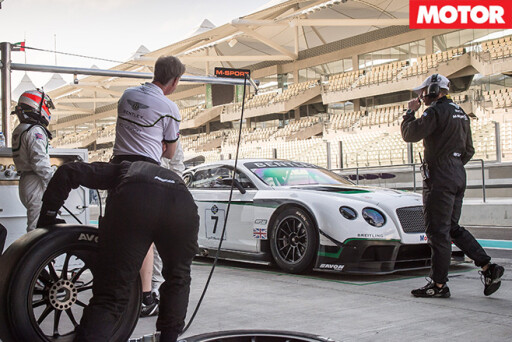 Your showroom Bentley Continental GT V8 weighs 2295kg, with self-levelling air suspension, an interior stuffed with thick, fluffy carpet and perfectly stitched leather, and it uses a front-mounted turbocharged engine to waft around.
Your showroom Bentley Continental GT V8 weighs 2295kg, with self-levelling air suspension, an interior stuffed with thick, fluffy carpet and perfectly stitched leather, and it uses a front-mounted turbocharged engine to waft around.
Compare that with a road-going McLaren 12C that boasts a carbon fibre tub and hydraulically-linked dampers and weighs only 1428kg. It, too, uses a turbocharged V8 engine, but it’s more powerful than the Bentley’s and mounted in the middle.
 While their differences sound like the precise reason for a luxury car manufacturer to avoid a category of motorsport swamped with supercars, last July Bentley wasn’t scared of any McLarens at the Blancpain Endurance Series race at French circuit Paul Ricard.
While their differences sound like the precise reason for a luxury car manufacturer to avoid a category of motorsport swamped with supercars, last July Bentley wasn’t scared of any McLarens at the Blancpain Endurance Series race at French circuit Paul Ricard.
There was an hour to go. Bentley flashed into the race lead, passing the ART Grand Prix McLaren 12C GT3 that had just completed an impeccable stop on the other side of pit wall. Once released the McLaren latched onto the Bentley’s tail in second place. The chase continued until the finish line, where the McLaren trailed by 1.1sec.
How exactly did Bentley give a 2300kg luxury car the ability to stave off a McLaren for an hour? It began with a witch-hunt for kilograms, Brian Gush, Bentley’s Director of Motorsport, tells MOTOR at the ’Ring. “Perceptions were we would never get the weight down, but we knew we would,” he says.

Kilograms were also shed from the Continental’s chassis. The GT3 car may use the road car’s steel monocoque, but with a roll-cage stiffening its core the rear floor was cut to free up more weight. Bentley also saved another 23kg by opting for the Audi-sourced twin-turbo V8 engine instead of the brand’s iconic twin-turbo W12.
All up Bentley sliced 995kg off the road car. “We aimed for 1300kg and we achieved 1300kg,” explains Gush. But the job wasn’t done. Distributing the meat left on the Continental’s bones was equally as important for finding speed.
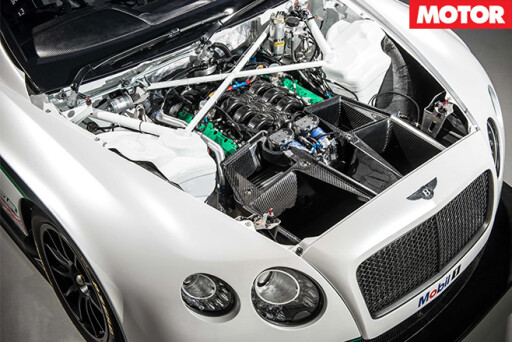 This was where the FIA’s loose GT3 technical rulebook came in handy. “The GT3 regulations [allowed] us to move components together for better weight distribution, because as a front-engine, front-transmission car you are disadvantaged.
This was where the FIA’s loose GT3 technical rulebook came in handy. “The GT3 regulations [allowed] us to move components together for better weight distribution, because as a front-engine, front-transmission car you are disadvantaged.
So we were able to put the transmission on the rear axle and move the engine back,” says Gush. “And then, of course, you can place components around the car where you want. So the [lightweight] battery is placed in the interior low down, the fuel tank is low down toward the rear, all aiming for 50:50 weight distribution.”
Rather than try and police parity through extensive technical regulations like Formula One, the FIA-developed GT3 rules that underpin the Blancpain Endurance Series do the opposite. They liberalise the framework to give manufacturers a window large enough to modify their cars to a certain level of performance.
 With Bentley’s GT3 fighter needing to last three-, six- and 24-hours at a time for the Blancpain Endurance season, most components were replaced during relocation. The road car’s eight-speed automatic unit was swapped for an Xtrac six-speed sequential gearbox, to act as the transaxle (GT3 is rear-drive only), while a carbon fibre propshaft bridged engine to transmission.
With Bentley’s GT3 fighter needing to last three-, six- and 24-hours at a time for the Blancpain Endurance season, most components were replaced during relocation. The road car’s eight-speed automatic unit was swapped for an Xtrac six-speed sequential gearbox, to act as the transaxle (GT3 is rear-drive only), while a carbon fibre propshaft bridged engine to transmission.
The suspension used the same regime. The Continental’s front wheels were pushed slightly forward to increase wheelbase length while new double-wishbone arms and fully adjustable Öhlins dampers at each corner were tasked with sealing 310mm-wide Pirelli slicks to tarmac. And, to reign it all in, six-piston front and four-piston rear Brembo calipers were paired with iron discs.
However, all the engineering in the world wouldn’t have helped if the driver didn’t have the talent to exploit it. And with gentleman drivers being at the core of GT3 racing, driver aids were employed.
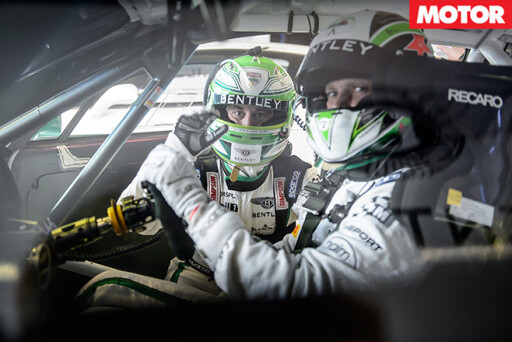 “We have various levels of traction control and ABS intervention. That’s how [GT3] differs from other series. It allows you to get gentleman drivers in the car and cope with the conditions,” says Gush.
“We have various levels of traction control and ABS intervention. That’s how [GT3] differs from other series. It allows you to get gentleman drivers in the car and cope with the conditions,” says Gush.
All these freedoms – huge brakes, wide slicks, radical diets, and a plethora of top-shelf racing components – help manufacturers build around a car’s flaws. The FIA then holds something called the balance of performance test before a season, to let it fine tune each GT3 car’s ability more precisely, allowing heavier, or less ideal, road cars to compete with faster ones.
For the balance of performance test every manufacturer’s GT3 car is driven on track by the same driver and its capability documented, before being modified to align its performance with a benchmark. This happens through changes to weight, aerodynamics, wheel width, ride height, fuel tank capacity, boost pressure or air intake restrictor size.
 It’s this inclusiveness that attracted Bentley to GT3, not wanting to run up costs or cross Porsche and Audi in prototype sports car racing, before it announced a return to motorsport in 2012. It’s also central, Gush reckons, to the quality of competition. “[The regulations] allow manufacturers to change their car, to make it a competitive package on the track, and that’s why the racing is so close.”
It’s this inclusiveness that attracted Bentley to GT3, not wanting to run up costs or cross Porsche and Audi in prototype sports car racing, before it announced a return to motorsport in 2012. It’s also central, Gush reckons, to the quality of competition. “[The regulations] allow manufacturers to change their car, to make it a competitive package on the track, and that’s why the racing is so close.”
With the balance of performance equalising every car’s ability, and the technical rules affording an easy homologation, there’s no incentive for manufacturers to go silly spending resources on development.
Today, GT3 seems to satisfy everyone involved. It’s a huge global market for manufacturers (over 18 GT championships currently feature GT3 cars), a proper GT category that’s accessible for privateers, and a vibrant road-car based competition for fans.
 But it is not without detractors. Bentley would have little hope competing with McLaren, Ferrari or Audi without the balance of performance. Some purists berate this democratisation of speed. With slower cars being given fewer restrictions, and faster ones given more of them, it stifles true innovation – a core motif in prestigious categories like Formula One.
But it is not without detractors. Bentley would have little hope competing with McLaren, Ferrari or Audi without the balance of performance. Some purists berate this democratisation of speed. With slower cars being given fewer restrictions, and faster ones given more of them, it stifles true innovation – a core motif in prestigious categories like Formula One.
Erase the system, however, and you could say goodbye to the sport’s varied make-up. Like the late ’90s epoch of international GT racing that saw dominant homologation specials like the McLaren F1 GTR, Porsche 911 GT1 and Mercedes-Benz CLK GTR, the sport might become a victim of its own excess. Customers will gravitate to whatever car is fastest.
Manufacturer participation, meanwhile, would dissolve into a contest of resource to create the winning car. Such a car would become unbeatable, and expensive, and the gap between affordable one-make series and big-stage GT racing would be a bridge too far for aspiring competitors.
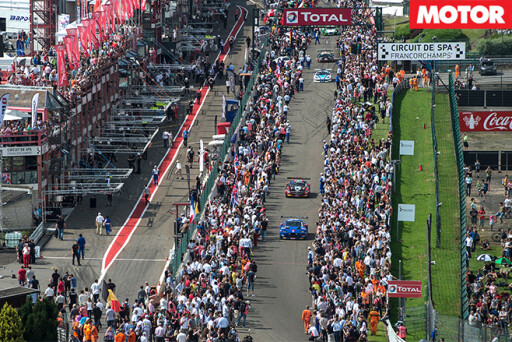 Nobody would want that for the GT3 category, at least not for the racing. It simply takes one YouTube search of last year’s Bathurst 12 Hour finish to confirm why. An epic duel between an Aussie touring car hero and European counterpart in two different supercars to the last lap?
Nobody would want that for the GT3 category, at least not for the racing. It simply takes one YouTube search of last year’s Bathurst 12 Hour finish to confirm why. An epic duel between an Aussie touring car hero and European counterpart in two different supercars to the last lap?
Riveting in anyone’s language – and, some say, so popular, V8 Supercars itself feels threatened. This year’s Bathurst epic, with two-factory supported Bentleys in the fray, should be even better.
Bentley doesn’t want to just take in our scenery here in Australia, either. It wants to win. Impressive when Gush admits there’s an omnipresent advantage enjoyed by cars like the Ferrari 458 GT3 that won last year. “A mid-engine sports car … will always be at an advantage over a front-engine four-seater.”
 However, after such a strong 2014 season in the Blancpain Endurance Series, Bentley’s proved GT3 doesn’t discriminate. Everyone’s equal should they apply the right ethic. Picture a Bentley, a McLaren, a Ferrari, perhaps even a kangaroo, charging down Forest Elbow...
However, after such a strong 2014 season in the Blancpain Endurance Series, Bentley’s proved GT3 doesn’t discriminate. Everyone’s equal should they apply the right ethic. Picture a Bentley, a McLaren, a Ferrari, perhaps even a kangaroo, charging down Forest Elbow...
Bentley Continental GT3
Active years: 2014 - present
Biggest 2014 win: Silverstone Pro
Engine: 4.0-litre V8 twin-turbo
Power: 373kW
Chassis: Steel
Weight: 1300kg
Price: ¤368,000
IN THE BEGINNING
GT3 racing owes a lot to one man: Stephane Ratel. Following the demise of Group C it was Ratel, along with Patrick Peter and German engineer Jürgen Barth, who created the BPR GT Series to revive global GT racing. It didn’t last long.
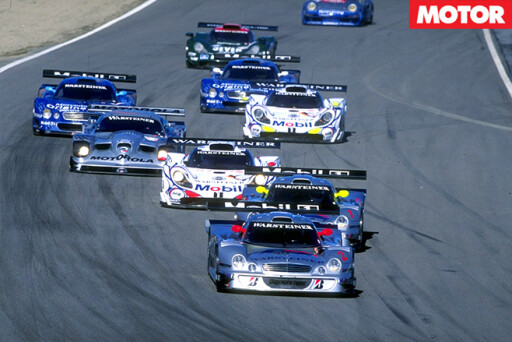 As popularity grew, the top-flight GT1 category became a fighting ground for marques. By 1997, amateur categories, like GT3, disappeared.
As popularity grew, the top-flight GT1 category became a fighting ground for marques. By 1997, amateur categories, like GT3, disappeared.
In 2005, after GT1 had died, Ratel decided to instil global GT racing with the accessibility that once defined it. For that to happen a new category had to be fair and cheap.
To address costs Ratel and the FIA considered infusing a field with cars from various one-make series, but each car’s speed would have wildly varied. However, the FIA had created the balance of performance system for its 2005 FIA GT Championship, it proved such a success it was adopted for GT3 in 2006 and remains a cornerstone of the series today.

COMMENTS